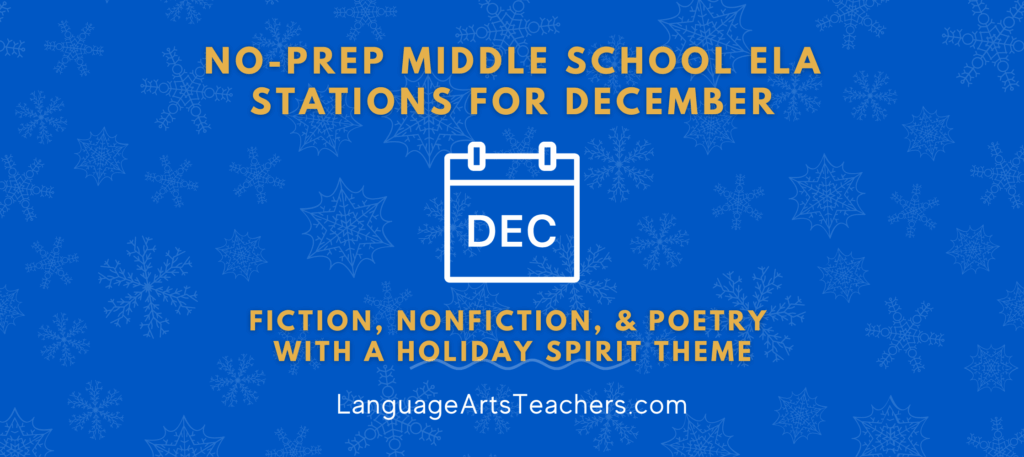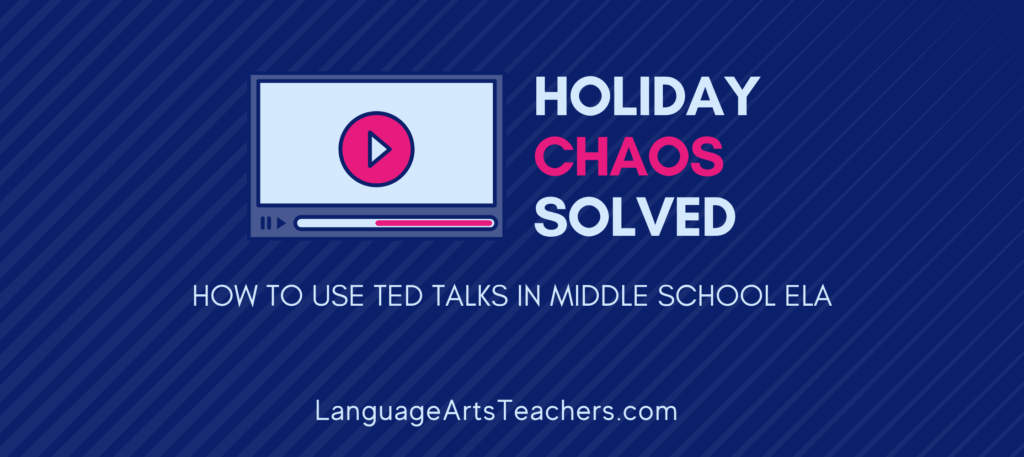Close Reading Skills & Annotating
Stop the excessive underlining and highlighting!
Close reading skills don’t happen by accident— it’s a skill set that, when implemented effectively, helps to engage readers and keep kids mentally focused as well as physically engaged.
When done correctly, it can put an end to reading an entire page and then thinking Um…What did I just read? (And honestly, aren’t we all guilty of that from time-to-time?)
If I tell my 6th grade Language Arts students that we’re going to “take notes while reading” they groan and moan about it. Ugh! It’s such a downer and it’s boring.
If I tell my 6th grade Language Arts students we’re going to pull out the highlighters and draw and color while we read, they get excited with fist pumps and the hiss of yes! permeates the classroom.
We use colored pens, pencils, and highlighters to annotate what we read (when I make copies…not in actual books!) and it keeps the students engaged much more so than just using pencils or simply not using anything at all.
If we don’t happen to have highlighters, we use light-colored markers, crayons, even map pencils. Really, I just tell them to pull out anything that writes in colors and we use what’s available.
I don’t even really mention that we’re “doing close reading today” or that “we’re about to annotate this.” How lame would that be?
Now after going through the motions of annotating and note-taking several times, I do start using the word “annotating” because, as a former high school English teacher, I’m fully aware that it’s a word they need to become very comfortable with. But at first, I don’t call it that.
I ultimately just want my students to use this powerful active reading tool and use it well.
1) It’s gonna be messy. You’re going to use pencils, colors, markers, highlighters, etc. And you will have words, phrases, and markings all OVER your paper. It’ll be crazy-looking.
2) You probably won’t use complete sentences. It doesn’t matter. Do whatever is quicker for you to do. There’s a time and a place for proper sentences and punctuation, but annotations don’t have to be like that.
3) Draw / sketch images along the margins of the page as you read. Make these images reflect what’s happening or what the passage makes you see in your mind.
4) Your annotations won’t look exactly like anyone else’s in the class. That’s ok. In fact, it’s a good thing. These annotations reflect things YOU notice in the reading.
5) Share your annotations with other kids in the class. Talk about what you marked or drew or highlighted. It’s ok to keep adding to your annotations as you share ideas with others.
So what do close reading annotations look like for a 6th grade Language Arts class (or for any other grade in a middle school Language Arts class)?
Here’s what annotations look like when your Language Arts students are learning how to do it:

Teach Students to Annotate a Non-Fiction Passage
(Close Reading Strategies)
Here’s What I Have My Students Do:
— Look at the title, subtitles, and any images and jot down a few words beside the title that you think the article will be about (I model this and we practice all throughout the year).
— Circle the subheadings that appear throughout the passage
— As you read, highlight the main idea of each section under the subheadings
— Highlight words and phrases that convey the author’s opinion about the topic
— Underline the sentence that best represents the author’s purpose in writing the article
— As you read, place a ? or ! or 🙂 beside parts of the text that confuse you, interest you, or that make you smile.
— Jot down a quick little summary or comment for each main section in the text
Teach Students to Annotate a Fiction Passage
(Close Reading Strategies)
Here’s What I Have My Students Do:
— What does the title make you think you’ll be reading about? (Jot it down)
— Highlight key words and phrases that indicate the setting (time and place)
— Highlight words and phrases that convey the author’s opinion about the topic
— Underline the sentence that best represents the author’s purpose in writing the story or poem or play (this leads to understanding the theme)
— As you read, place a ? or ! or 🙂 beside parts of the text that confuse you, interest you, or that make you smile
— Circle parts of the passage that you think represent a conflict in the story
— Jot down a quick little summary of the overall story
Teach Students to Annotate a Poem
(Close Reading Strategies)
Here’s What I Have My Students Do:
— What does the title make you think you’ll be reading about? (Jot it down)
— Draw a box around each stanza (if applicable)
— Highlight every other sentence (a line is not the same as a sentence)
— Highlight words and phrases that convey the author’s opinion about the topic
— Underline the sentence that best represents the author’s purpose in writing the poem (this leads to understanding the theme)
— As you read, place a ? or ! or 🙂 beside parts of the poem that confuse you, interest you, or that make you smile
— Draw or sketch a little image next to each stanza (helps students imagine what they are reading)
What Do Students Do After They Annotate?
The Sky is the Limit Here!
Ideas:
— Write a response to the text, explaining in your own words why you decided to hi-light certain parts and why those parts are important to you (make it as formal or informal as you want)
— Share what you annotated with a partner or small group and talk about what you marked (it may not all be the same)
— Use the annotations to facilitate a class discussion about the text, filling in the blanks in understanding and then diving deeper
— Make the reading/annotation part a homework assignment and then use that piece for the next day’s activities
— Speaking of homework, even when annotating is not the purpose, I give kids 10 extra bonus points on assignments where they chose to annotate (and I almost never, ever give any extra credit or extra points on anything).
— Allow students to use their annotated papers on quizzes and tests to add meaningful extension (also provides a realistic reason for kids to keep up with their handouts and notes). The natural consequence of refusing to annotate or not keeping up with your papers? — You don’t have anything to help you on the quiz or test.
You know what else is a cool way
to help kids see the reason that annotating
(close reading) is so important?
Step 1:
Have students read a text or passage quietly and then write a response about it or answer some questions over it.
Step 2:
Give students a very similar passage and have them read it quietly while annotating it. Then let them share their notes with each other and talk in partners or small groups about what they read and marked. THEN have the students work independently again on either a written response to the passage or questions.
In doing this, you’re showing your students that
— they really can be in charge of their own learning.
— there are ways to make sense of what they read.
— they should have confidence in figuring out things on their own.
You’re also showing your students that good readers
— read things more than once
— interact with the text
— talk about what they’re reading




